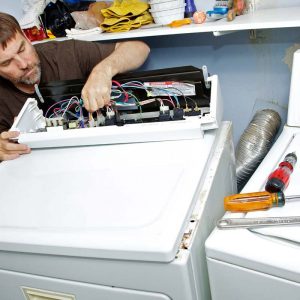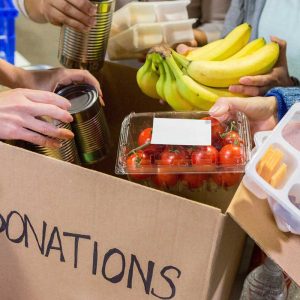Last Updated on May 8, 2025


Toronto—buzzing with culture, creativity, and an unspoken love for coffee—has no shortage of cozy cafés. Writers, students, tech freelancers, remote workers, and TikTok editors all converge under the hum of espresso machines and free internet. That Wi-Fi sign taped to the counter? Tempting. But it’s not just your favorite café patrons tuning in. Threats, silent and unseen, often hang in the digital air. So, how do you enjoy your flat white and stay digitally safe at the same time?
Let’s dive in. No filler. No fluff. Just practical advice—and a few eye-openers.
The Hidden Dangers of That “Free WiFi” Sign
Here’s a truth many ignore: public Wi-Fi is a security minefield. And Toronto’s cafés, with their generous “customer Wi-Fi” offers, are no exception. In a study by Symantec, 53% of users admitted they couldn’t tell the difference between a legitimate public network and a rogue one. Even more unsettling—over 60% of them still connected anyway.
You wouldn’t leave your laptop unattended on a Queen Street West patio. So why leave your data exposed?
Tip 1: Double-Check the Network Name
Ever noticed two Wi-Fi networks with nearly identical names? “CaféBistroGuest” and “CafeBistroFree”? That’s no coincidence. Cybercriminals often create fake hotspots that mimic real ones—a method called evil twin attacks. Once you connect, they can watch your traffic, steal login info, or plant malware.
Always ask the barista for the exact network name. Don’t guess. Don’t assume.
Tip 2: Use a VPN—Your Digital Cloak
This is the game-changer. A VPN (Virtual Private Network) encrypts your data traffic, making it nearly impossible for hackers to snoop, even on the sketchiest of Wi-Fi hotspots. It masks your IP address and routes your internet activity through a secure tunnel.
You’re sipping a cappuccino. Someone three tables away is trying to sniff packets. With a VPN, they get gibberish. You stay invisible.
The main rule is to use reliable VPN apps on all available devices. We recommend using a free VeePN to protect yourself while browsing at your favorite Toronto spot. VeePN is lightweight, easy to use, and keeps your data out of shady hands. Whether you’re at Balzac’s or FIKA, your connection stays clean.
Tip 3: Enable Two-Factor Authentication (2FA)
Toronto café Wi-Fi or not, 2FA is your digital seatbelt. If someone somehow snags your password, they still need a second key—usually a code on your phone—to get in. Gmail, Instagram, your bank app—all of them support it.
Turn it on. Always.
Tip 4: Avoid Sensitive Transactions
Would you read your tax forms aloud in a coffee shop? Probably not. So don’t do the digital equivalent.
While sitting at Dineen or Boxcar Social, skip:
- Online banking
- Shopping with saved credit cards
- Updating account passwords
Save that for when you’re home and on your private, secure network. No espresso is worth financial exposure.
Tip 5: Turn Off Sharing Features
Your laptop doesn’t need to be discoverable by every other laptop in the café. Disable sharing settings like AirDrop (Mac), File Sharing, or Network Discovery. These are entry points. And if you’re not actively using them, they’re liabilities.
Bonus: On a Mac? Go to System Preferences → Sharing → uncheck everything. On Windows? Control Panel → Network and Sharing Center → Change advanced sharing settings.
Tip 6: Update Your Software—All of It
Updates are annoying. Everyone knows. But many of them patch security holes. If you’re running an outdated version of your browser or OS while connected to a public network, you’re basically walking into battle with an open wound.
Chrome. Firefox. Edge. Your OS. Your apps. Your antivirus. Update them before you step into that café. Not after.
Tip 7: Use HTTPS or Get Out
You’re typing away, maybe shopping online, logging into email, checking your bank balance. Are the sites you visit encrypted? If the URL doesn’t begin with https://, back away. Immediately.
Install browser extensions like HTTPS Everywhere. It forces a secure connection on supported sites. Without it, your data could be read like an open book on a café table.
Tip 8: Use a Firewall (Yes, It Still Matters)
Many people disable firewalls because they’re “annoying.” Let’s stop doing that.
Firewalls block unauthorized access to your device. Think of them as the polite but firm bouncer at the club. No ID? No entry. If you’re on Windows, it’s built-in. Mac, too. Third-party options exist, but even the default ones are better than nothing.
Tip 9: Log Out and Forget the Network
When you’re done, disconnect. Don’t just close your laptop and stroll out. Log out of websites, disconnect from the Wi-Fi, and tell your device to “forget this network.” Otherwise, your device might auto-connect next time—without you knowing.
That’s a gift to hackers.
Toronto Is Safe—Mostly. But Wi-Fi? That’s a Jungle.
Toronto ranks as one of the safest major cities globally, yes. But digital threats don’t follow city safety rankings. Just because the barista smiled at you doesn’t mean the Wi-Fi’s safe.
Cybercriminals operate in silence. Their tools are invisible. Your defense needs to be deliberate.
Final Sips: A Summary to Remember
- Ask for the exact Wi-Fi name.
- Only visit https sites.
- Enable 2FA on everything.
- Skip sensitive tasks while on public networks.
- Disable sharing features when not in use.
- Update your system and apps before heading out.
- Always use a VPN.
- Keep your firewall active.
- Log out and forget café networks after use.

Conclusion
Café Wi-Fi in Toronto is convenient, but convenience can breed complacency. Don’t let your data ride unsecured through the digital wild. With just a few smart habits, you can enjoy the city’s café scene and stay Wi-Fi safe.






